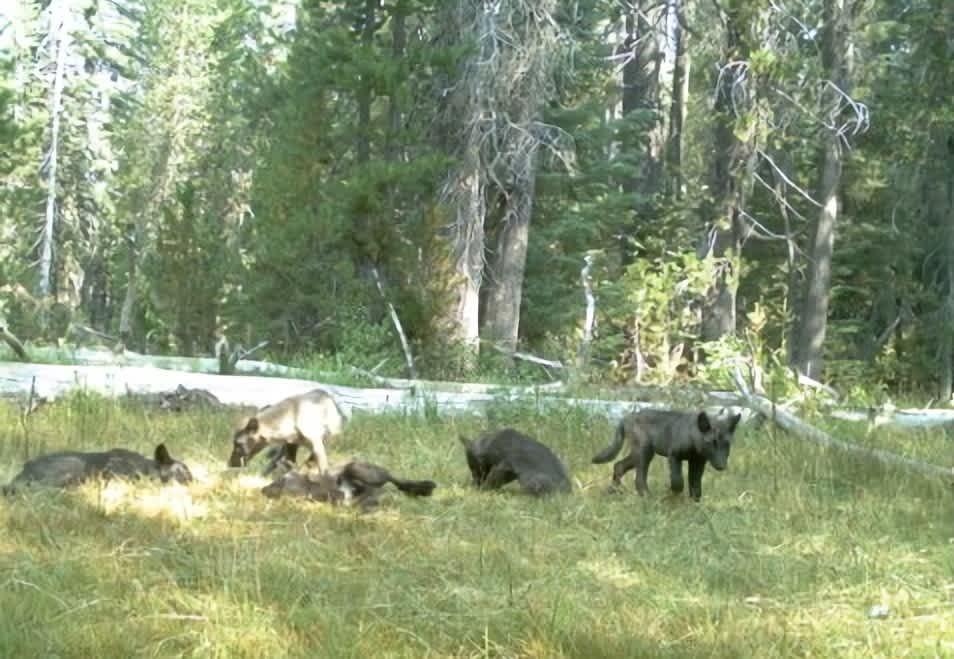California’s Long-awaited Wolf Plan Outlines Future of Species
OutdoorHub Reporters 12.11.15

Earlier this month the California Department of Fish and Wildlife (DFW) released a draft of its wolf conservation plan for public input. The plan outlines how to manage wolf-livestock conflicts, strategies for ensuring a healthy deer population to feed the predators, and, when the species reaches a sustainable population, how to remove them from the state endangered species list. The wolves would still have to be downgraded first on the federal endangered species list before the state could authorize legal take, or a hunting season.
“We think we’ve presented a pretty solid plan, but we will look to continue the process with the stakeholder group and the public to help us make something more final,” DFW spokesperson Jordan Traverso told The San Francisco Chronicle. “The fact that wolves have come back after nearly 100 years is a really great ecological story. It’s really exciting, and it’s also kind of scary for a lot of people. There isn’t a lot of historical knowledge from the time when wolves were here last, so there is a lot to be learned.”
Wolves only recently migrated back into the state, to the surprise of wildlife officials. Gray wolves were extirpated from California in 1924 and for almost 90 years, no wolf had ever been spotted in the Golden State. Then, in 2011, a lone wandering male from Oregon named OR-7 crossed the border in a 2,500-mile trip from his home. OR-7 has since returned to Oregon to found his own pack, but others have followed in his stead. In August, officials confirmed that a group of at least two adults and five pups were living in Siskiyou County. The DFW designated the group as the Shasta Pack, the first so far in the state.
“This news is exciting for California,” Charlton H. Bonham, DFW Director, said at the time “We knew wolves would eventually return home to the state and it appears now is the time.”
What was exciting for some was also worrying for others. Ranchers say they are concerned that the state’s growing wolf population will become a major problem for livestock, and hunters are also worried about the predator’s impact on ungulate populations. The DFW met with the California Cattlemen’s Association, California Deer Association, and Rocky Mountain Elk Foundation to develop the current draft for the conservation plan. Animal advocacy groups such as the Center for Biological Diversity and Defenders of Wildlife were also included.
The plan itself is divided into three phases with the overarching goal of allowing wolves to establish a population with as little conflict as possible. Currently the plan is in Phase One, where only a small number of wolves are living in the state. Once that population contains at least 16 wolves and five breeding pairs, the plan will enter Phase 2.
“This phase is envisioned as a period of time when wolves range into and inhabit suitable areas of northern California, and perhaps portions of the central Sierra Nevada,” the DFW said in the draft plan, stating that the department will have additional latitude to manage wolves in the state.
Once there are nine breeding pairs and between 50 to 75 wolves, the state will enact Phase 3 of its conservation plan. This is when officials will start to consider de-listing the species from the state endangered species list.
“Phase 3 is envisioned as implementation of long-term management strategies. Necessarily, this phase can only be framed in general terms because forecasting the details of this future is impossible using currently available information,” the DFW stated.
Or in other terms, the department will have to see how the wolves act in their new environment.
“It’s impossible to speculate what Mother Nature would do,” Traverso told The Fresno Bee. “We have no idea.”
The department says the plan can be adapted depending on the status of the wolf population. Public input will be received until February 16, 2016.

